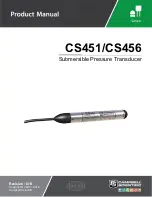
2
Tuning the Antenna for Optimum SWR
Because such a wide variety of base and mobile antennas are
available, this section will concern itself only with the usual types of
mobile adjustable antennas.
Antenna length is directly related to signal frequency. Therefore, it must
be tuned to resonate optimally throughout the frequency range of the
transceiver.
Lower frequencies require a longer antenna than higher frequencies.
Due to the various methods of adjusting antennas for proper SWR, we
have chosen what we think is the optimum method:
A. Antennas with adjustable screws (setscrews).
Start with the antenna extended and tighten the setscrew lightly
11
enough so that the antenna can be lightly tapped with your finger for
easy adjustment.
Set your Stryker radio to your desired operating frequency or the
21
center of the range of frequencies you plan to use. Press the PTT
(Press-To-Talk) switch, and tap the antenna (making it shorter).
The SWR meter will show a lower reading each time the antenna
is tapped. By continuing to shorten the antenna, you will notice the
SWR reading will reach a low point and then start rising again.
This means that you have passed the optimum point for the middle
frequency.
Extend the antenna a short distance and again follow the procedure
31
above.
When the lowest point has been reached, switch to the lowest
41
frequency you plan to operate on and then to the highest and
compare SWR readings. They should be almost equal.
B. Antennas that must be cut to proper length.
Follow the procedure as in A above, but adjust the length by cutting
11
in 1∕8" increments until a good match is obtained.
Be very careful not to cut too much off the antenna at one time.
21
Once it is cut, it can no longer be lengthened.
The whip is easily cut by filing a notch all the way around, then
31
breaking the piece off with pliers.
NOTE:
The proper setting is achieved when the SWR is 1.5 or below and when it has
the same reading for the low and high frequencies in the range you plan to use.
External Speaker
The external speaker jack (EXT) on the rear panel is used for
remote receiver monitoring. The external speaker should have 8 ohms
impedance and be able to handle at least four watts. When the external
speaker is plugged in, the internal speaker is disabled.
Programming Jack
Using this jack and the supplied USB preprogramming cable you
can change many of the default options that your radio has. Our
programming software has easy to follow on screen instructions for
making these changes. Our programming software is available for
download via our website.
Public Address
To use the transceiver as a public address system, connect an external
8 ohm speaker that is able to handle at least four watts to the PA jack on
the rear panel. Direct the speaker away from the microphone to prevent
acoustic feedback. Physical separation or isolation of the microphone
and speaker is important when operating the PA at high output levels.
Improper Radio Adjustments
Service by unqualified technicians could result in damage to your
radio. Never allow anyone to disable your radio’s modulation limiting
circuitry. We have designed your radio for optimal performance
and durability. Disabling this circuitry could damage your radio and
potentially void your factory warranty!
For further service information please visit www.StrykerRadios.com.
Operating Guide
FUNC:
11
Pressing this button in for approximately three seconds allows
you to access the function menu.
Summary of Contents for SR-955HPC
Page 1: ......
Page 11: ...A2 0 12 11 ...





























